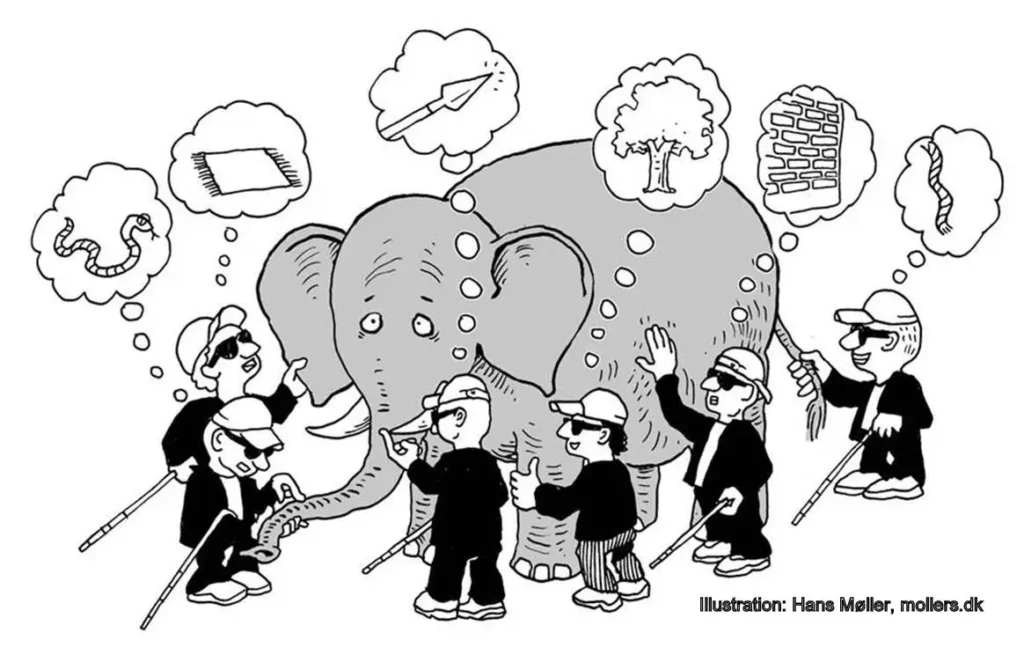This is the second of a sequel of three articles that explore the crucial role of System Thinking for the success of an Agile Transformation. If you haven’t seen the first part yet, check it out here: Why Agile Transformations Require System Thinking
The starting point from our previous article was the question about why so many Agile transformations disappoint when scaling up to more teams or departments. One of our conclusions was that you might be helped by taking a systemic approach. In this article, we talk more about what that means and how that can help.
Basically, that means recognising that a whole is greater than the sum of its parts. In other words, all the pieces of an organisation connect, interact, and play a part in producing outcomes that extrapolate the juxtaposition of all elements.
Systems thinking can help in all organisations that change towards an Agile way of working by providing a holistic approach to solution development, thus incorporating all aspects of a system and its environment into the design, development, and delivery of the solution this system provides, or the value it creates.
What are the benefits of Systems Thinking?
First of all, it expands the range of choices available for solving a problem, by broadening our thinking and helping us articulate problems in new and diverse ways. At the same time, the principles of systems thinking make us aware that there are no perfect solutions; the choices we make will have an impact on other parts of the system. By anticipating the impact of each trade-off, we can minimise its severity or even use it to our own advantage. A holistic approach won’t tell you which changes should be made, but will help you envision the impacts of any change in the whole chain. Systems thinking therefore allows us to make informed choices.
It is also valuable for telling compelling stories that describe how a system works. For example, the practice of drawing causal loop diagrams forces a team to develop shared pictures or stories of a situation. The tools are effective vehicles for identifying, describing, and communicating your understanding of systems, particularly in groups.

What does Systems Thinking mean to an Agile Transformation?
Translated to issues within an agile transformation, the change approach can highly benefit from a systemic approach:
- Systems thinking can help organisations align their vision, values and goals with the Agile principles and practices.
- Systems thinking helps in a change process to better understand the interrelationships between different elements within the system, such as people, processes, products, and customers. This will help in setting up Agile teams with low or less dependencies, while exposing unknown dependencies before the proverbial faeces-fan encounter.
- A Systems thinking approach can also help in dissolving problems that are complex, dynamic, and ambiguous, also known as the wicked problems. And in a technological, complex and dynamic environment we are always sure that those questions will arise.
At Wemanity, we are very proud of our Transformation approach, which helps organisations go through changes or even (the ultimate goal) autonomously become adaptable in a permanent way. Systems thinking play a crucial role in making this model so successful. Send us a message if you want to know more about our Transformation framework or the role of System Thinking in it!
See Also
Part 1: Why Agile Transformations Require System Thinking
Part 3: How to Ensure System Thinking in Agile Organisations
Summing Up
Basically, this approach means recognising that a whole is greater than the sum of its parts. In other words, all the pieces of an organisation connect, interact, and play a part in producing outcomes that extrapolate the juxtaposition of all elements.
Systems thinking expands the range of choices available for solving a problem, by broadening our thinking and helping us articulate problems in new and diverse ways, having in sight the impact of each decision on other parts of the system. It therefore allows us to make informed choices.
– Systems thinking can help organisations align their vision, values and goals with the Agile principles and practices.
– It also helps to better understand the interrelationships between different elements within the system, such as people, processes, products, and customers.
– And finally, it can also help in dissolving problems that are complex, dynamic, and ambiguous.












